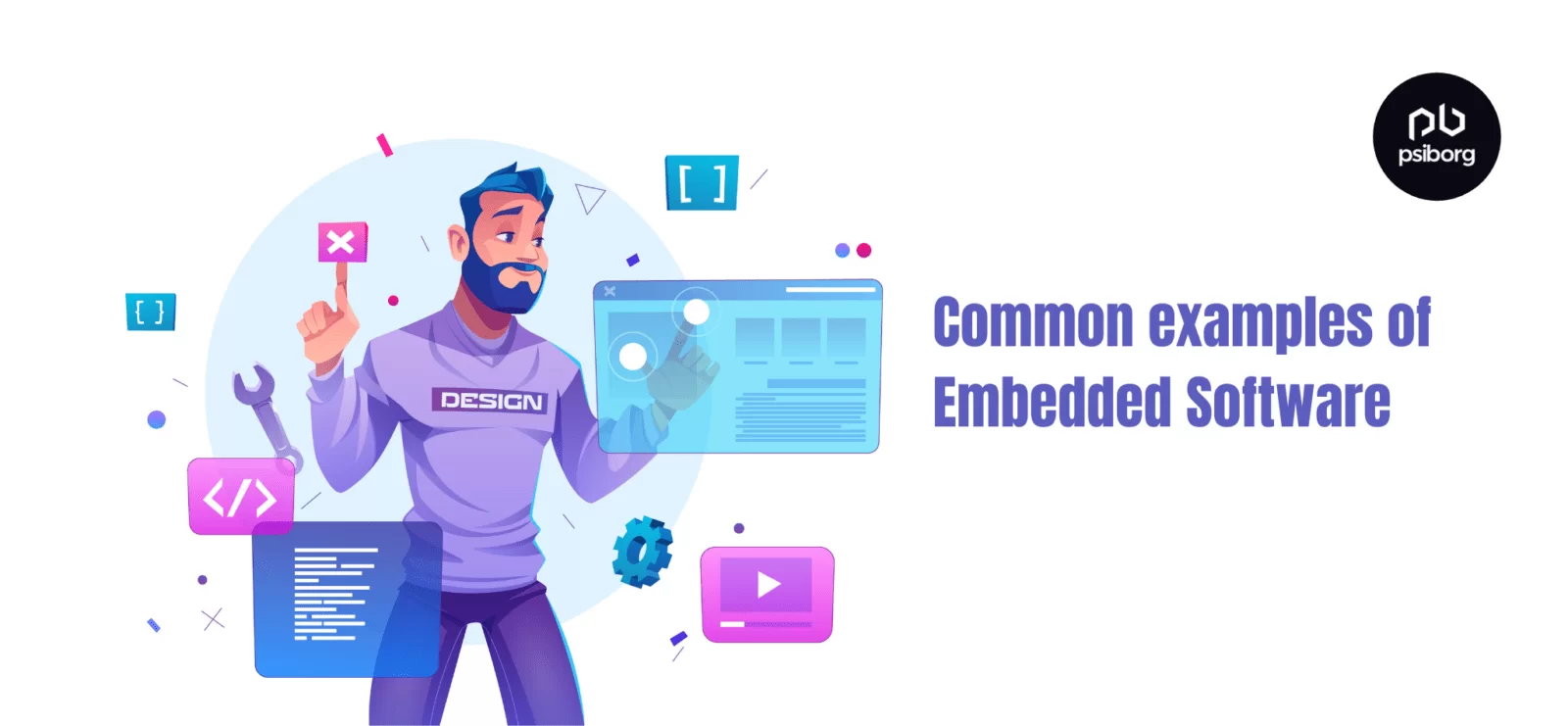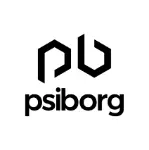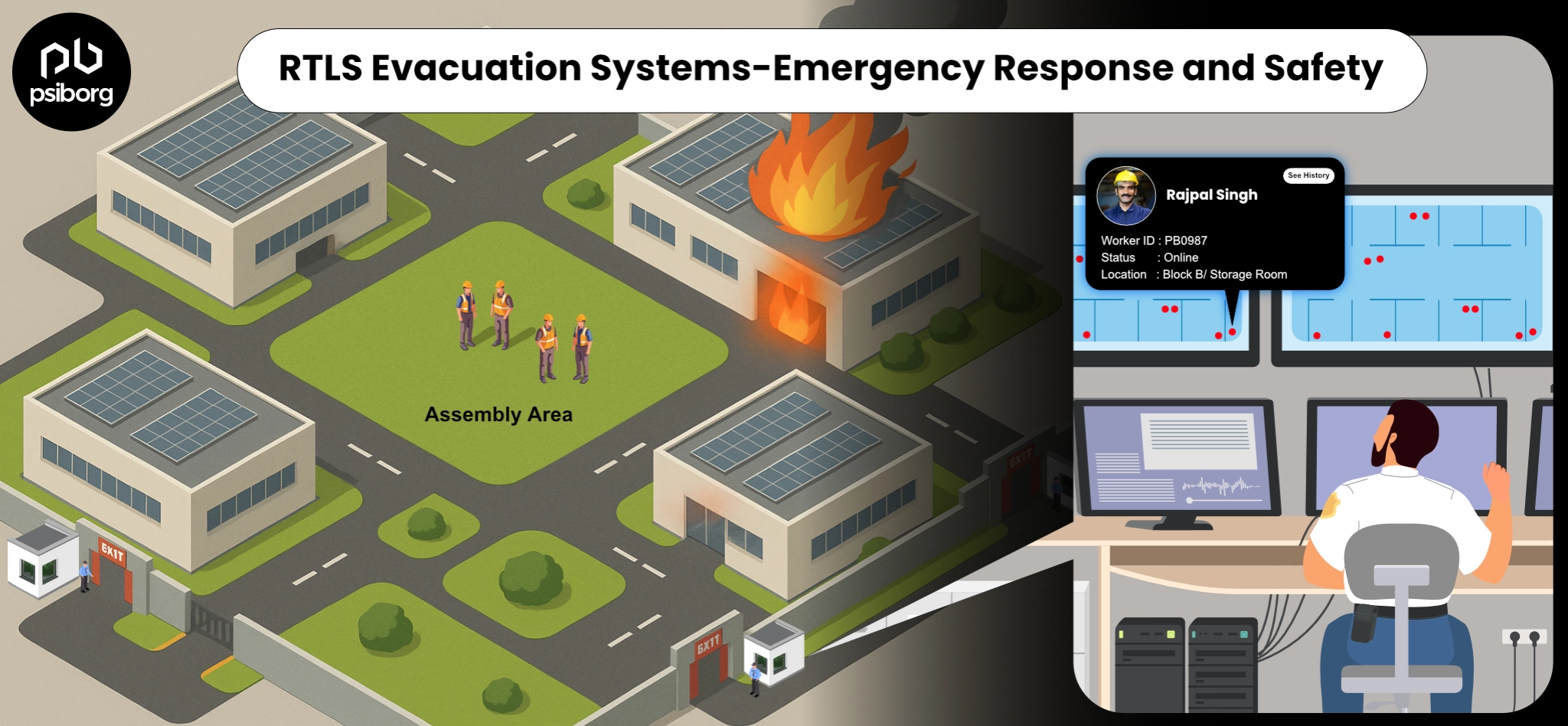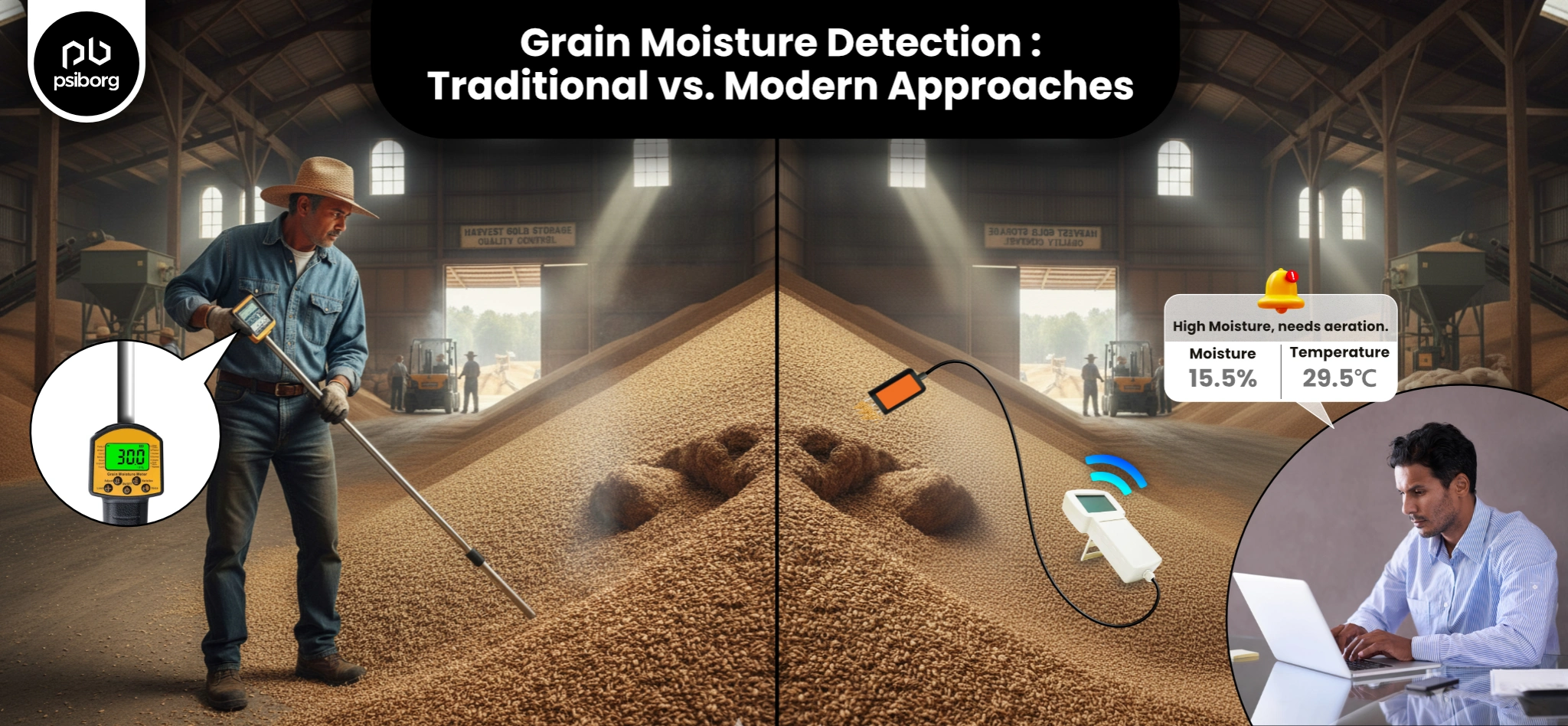To know about embedded software development, we need to keep in mind several aspects. The impact of embedded software development on various technical streams has been growing at an accelerated rate over the years. The blog provides a simple yet detailed overview of embedded software development.
WHAT DOES ONE NEED TO KNOW ABOUT EMBEDDED SOFTWARE DEVELOPMENT?
Embedded software is basically specialized programming integrated into non-PC gadgets or devices. It can be either a component of a microchip or a part of a different application externally connected to the chip. The software controls a specific (or even multiple) functional output of the device.
It is not like a conventional PC application. A traditional software product can be installed in several types of computer systems. Moreover, frequent modifications are possible, enhancing different functional features. Such things are not possible with embedded software. The dynamics in which an embedded software product works is completely different.
There are fixed requirements for the hardware in case of integrating embedded software. In addition, its capabilities are well-defined. It is exclusive to a specific device or machine. The processing features, along with memory restrictions are directly linked to the particular specifications or functionalities of the device.
STRUCTURE OF THE EMBEDDED SYSTEM
An embedded system is different from an embedded software product. Before understanding the differences, it is important to know the structure of the system.
An embedded system means a comprehensive system of hardware supporting the functionalities of embedded software. The components include intricate power supply circuits, various central processing units, serial communication ports, etc.
In the early phase of designing a device, the structure of the embedded system is planned and decided by the experts. The configuration of the system is set, too. After that, the development of embedded software begins, from scratch, in a phase-wise manner.
Coming to the differences, as you can easily guess by now, embedded software is a part of embedded systems. An Embedded system is fundamentally the cluster of Embedded hardware, consisting of components like Controllers, processors, Power supply, etc, backed up by the code to perform specific functionalities. This code in the embedded system supporting the hardware is embedded software.
Therefore, these are technically integrated with each other to provide the desired functionality associated with a non-PC device.
TYPES OF EMBEDDED SOFTWARE
Various materials across the internet would tell you about different types of embedded software. To keep things simple and crisp, the blog precisely discusses 4 broad categories of embedded software:
1. EMBEDDED BARE-METAL SOFTWARE
It is the simplest version. Other software products branch out from it. But, on a practical note, it is the hardest to design as there is no Operating System running.
2. EMBEDDED LINUX SOFTWARE
Due to the open-source features of Linux, any experienced developer can build their own software product, fulfilling the functionality of the device.
3. EMBEDDED RTOS SOFTWARE
The full form of RTOS is Real-Time Operating System. The software meets the time-bound functionalities of a non-PC device.
4. EMBEDDED NETWORKING SOFTWARE
It manages the custom network stacks. The software connects two different modules in the system.
The designing and implementation of an embedded software product depend on the nature of functionality the particular non-PC device needs to fulfil. The software is built and integrated accordingly.
COMMON EXAMPLES OF EMBEDDED SOFTWARE

A few examples would make it easier for you to understand the wide-ranging applications of embedded software.
MEDICAL IMAGE PROCESSING
Embedded software application plays a big role in the sphere of medical imaging. The devices use the software to take images of internal organs of the human/animal body. The technology is prolifically used for diagnosis, research, and operations. A machine such as an MRI scanner has integrated software. When it scans the brain of a person, it uses the software to take images of the brain. The detailed image reveals the medical issues, if any, as clearly as possible. It advances medical diagnosis and enhances remedial measures, saving lives.
AIRCRAFT CONTROL SYSTEM
Control system in aircraft is another area where there is the utilization of embedded software. All modern aircraft, irrespective of their size and purpose, have integrated embedded software.
As an aircraft has multiple functionalities, there can be multiple embedded software products in the aircraft’s hardware system. The control system helps the pilot accurately fly the aircraft, in a given direction and at a given speed. It also helps in maintaining safety standards.
MOTION DETECTION IN SECURITY CAMERAS
In the last decade or so, both public and private entities have increasingly stressed the need for robust security within property premises and sensitive areas. As A Result, there has been a sharp rise in the usage of CCTV cameras, rather than security cameras.
Such non-PC devices are clear examples where embedded software has its relevance. The software product enables the device to flawlessly detect any kind of motion in its frame. It clearly records the movement. Such video documentation helps the concerned authorities to maintain and, if needed, revise the existing security standards.
CONTROL SYSTEM OF TRAFFIC LIGHTS
Traffic lights implement road safety measures and prevent accidents. The equipment also plays an important role in controlling congestion. Modern traffic lights across the globe leverage the power of embedded software products. The software is expertly embedded in the traffic light system, adding value to its functionality.
It perfectly detects road conditions and operates accordingly. The intelligent embedded system knows when to switch over to a suitable light colour. As A Result, the standard of traffic safety is enhanced.
Drivers and pedestrians follow traffic regulations more accurately. The embedded software product (Telematics and fleet management) enables the traffic light system to clearly communicate with the people at the right time.
AUTOMATION SYSTEMS IN SMART HOME DEVICES
The popularity of smart home devices is fast attaining a huge scale. Such devices advance lifestyle and make different daily chores more manageable. The timing and automation systems of such devices essentially contain high-end embedded software products.
The software helps in triggering and modulating certain functionalities of the device. For example, a Healthcare smartwatch device knows the number of calories burned during an exercise session. A smart lighting system knows when a human enters or leaves a room. As a consumer, your life becomes more enjoyable and certainly smarter. Thanks to embedded software.
Suggested Reading: TIPS AND TOOLS FOR EMBEDDED FIRMWARE DEVELOPMENT
KEY COMPONENTS OF EMBEDDED SYSTEM
An embedded system is fundamentally built on both hardware and software components. The points below explain further.
1. POWER SUPPLY
It is one of the key components in the era of ULP (Ultra Low Power) designs. The voltage range is from 1.8V to 3.3V (usually). As you can guess, the main task of the component is to supply power to the specific circuit of the embedded system. The selection of power supply depends on the application requirements. A continuous, smooth, and efficient power supply is always recommended.
2. PROCESSOR / MICROCONTROLLER
The processor / Microcontroller is the embedded system’s brain. The performance of the system depends on it. There are numerous varieties of processors and controllers available in the market depending on the needs of the application. The embedded system can act as a central processing unit. There can be an 8-bit, 32-bit, or processor even with a higher number of bits.
3. MEMORY
To make sure not to run out of spaces for any variables or programs, Memory is required. Flash, RAM, ROM, and EEPROM are some of the components of memory. Basically, there are two categories – RAM and ROM. RAM stores data temporarily. ROM is the code memory storing data permanently.
4. TIMER COUNTER
As you have already read in the blog, there are particular embedded software applications that implement automation features based on time. Accordingly, the embedded system has a timer counter. The component is integrated with the embedded system according to the user’s requirements.
5. COMMUNICATION PROTOCOLS
Communication protocols are special types of interfaces that help in communicating in embedded systems. There are many types of communication ports for various protocols. Some examples are – UART, Ethernet, RS-485, etc.
For small case usage, the communication port functions from the embedded system’s microcontroller. Data is transferred within the system board. There can be serial communication ports transferring data from one embedded system to another also.
6. OUTPUT & INPUT COMPONENTS
The input component interacts with the embedded system to deliver a function. Usually, a sensor provides it. The output port of the system delivers the result.
7. APPLICATION CIRCUITS
The circuit interconnects various components of the embedded system. The selection of a circuit is dependent on the type of application the embedded system requires or uses. For example, a system that has the objective to measure temperatures in a certain range requires a circuit suitable for temperature sensors.
TOOLS FOR EMBEDDED SOFTWARE DEVELOPMENT
There are various tools used in the development of embedded software. These tools are provided by many companies to make our IoT solutions development journey easier.
1. ASSEMBLER
The assembler deals with bringing together the codes of the programming language that builds the embedded software. It converts the code into exclusive HEX codes for further processing.
2. EMULATOR
It is another key component for creating an embedded software product, relevant to the system. Basically, it executes the host system’s functions. The emulator tool controls each and every component. You can also use it to locate bugs. It is effective in debugging codes.
3. COMPILER
The compiler converts the programming language into an understandable language for the target system/machine. Accordingly, the target system executes the desired output. The compiler efficiently creates low-level language from high-level codes.
4. INTEGRATED DEVELOPMENT ENVIRONMENT
IDE contains all the necessary tools required for embedded software development. As it would be extremely inconvenient to use them separately, adding another layer of complexity to the project development.
Therefore, to simplify the embedded software development process, it is recommended to use integrated development environments as they have all the tools like Assembler, emulator, and compiler in one package.
5. KEY SKILLS AN EMBEDDED SOFTWARE DEVELOPER SHOULD HAVE WHILE DEVELOPING IT
If you are serious about building a career in the field of embedded software development, then you require a set of technical skills. The competitive job sector always has an uninterrupted supply of positions of embedded software developers. You need to equip yourself accordingly to get recruited. You might already have some of the requisite skills. The priority, then, is to hone those skills. Without much ado, here is a shortlist of skills you must possess as an embedded software developer.
6. EXPERTISE IN C & C++
You have to be well-versed in programming languages such as C and C++. Most of the embedded system software products are built in these two languages.
7. KNOWLEDGE ABOUT MICROCONTROLLERS
You must also display a fair amount of expertise in the concepts of microcontrollers and microprocessors.
8. EXPERTISE IN LINUX
As a developer, you should be at least an intermediate level of skills in using Linux.
9. SOFTWARE OPTIMIZATION
The developer must also have standard software optimization skills, as embedded systems have limited memory so code optimization is a must.
10. KNOWLEDGE ABOUT RTOS
It is important to have some expertise in various technical aspects of RTOS.
11. EXPERTISE IN DEVICE DRIVERS
As an embedded system software developer, it is necessary to possess expertise in device drivers and building custom libraries for various peripherals.
Working with existing codebases: You should not face any problem in smartly working the existing codebases of the software product.
12. DEBUGGING SKILLS
It is needless to say that you must display excellent debugging skills as an embedded system software product developer.
13. UNDERSTANDING DESIGN PATTERNS
You should not counter any issues by deeply understanding the delicate design patterns of various technology components.
14. SKILLS TO WORK WITH HARDWARE TESTING TOOLS
There should be no problem in working with a wide range of hardware testing tools as well as knowledge of electronic components.
15. KNOWLEDGE ABOUT COMMUNICATION PROTOCOLS
The development of any embedded software requires learning about communication protocols. You should be skilful on this matter. Examples of some protocols are I2C, USB, Controller Area Network (CAN), Recommended Standard 485 (RS 485), WiFi, Bluetooth, etc.
16. A BASIC UNDERSTANDING OF IOT
An embedded software developer should have a basic understanding of different aspects of the Internet of Things (IoT).
17. KNOWLEDGE ABOUT DATA STRUCTURES
It becomes easier and very convenient to develop an embedded software product when you possess good knowledge about data structures.
18. KNOWLEDGE OF CLOUD
An embedded software developer should know about protocols like MQTT, and HTTP for device communication with the server.
19. KNOWLEDGE ABOUT RISC-V
It is also important to be knowledgeable about the tech architecture associated with the RISC-V instruction set.
Also Read: A GUIDE TO EMBEDDED SOFTWARE DEVELOPMENT FOR EVERYONE
Conclusion
It is hoped that the blog has been able to touch each and every relevant point related to the field of embedded software products and their applications. Many of you could have been oblivious to the software applications in daily life. Not anymore! The blog provides suitable examples in this context.
Moreover, if you are planning to become a successful embedded software developer, you are now aware of the skill set you need to achieve your goal confidently.





